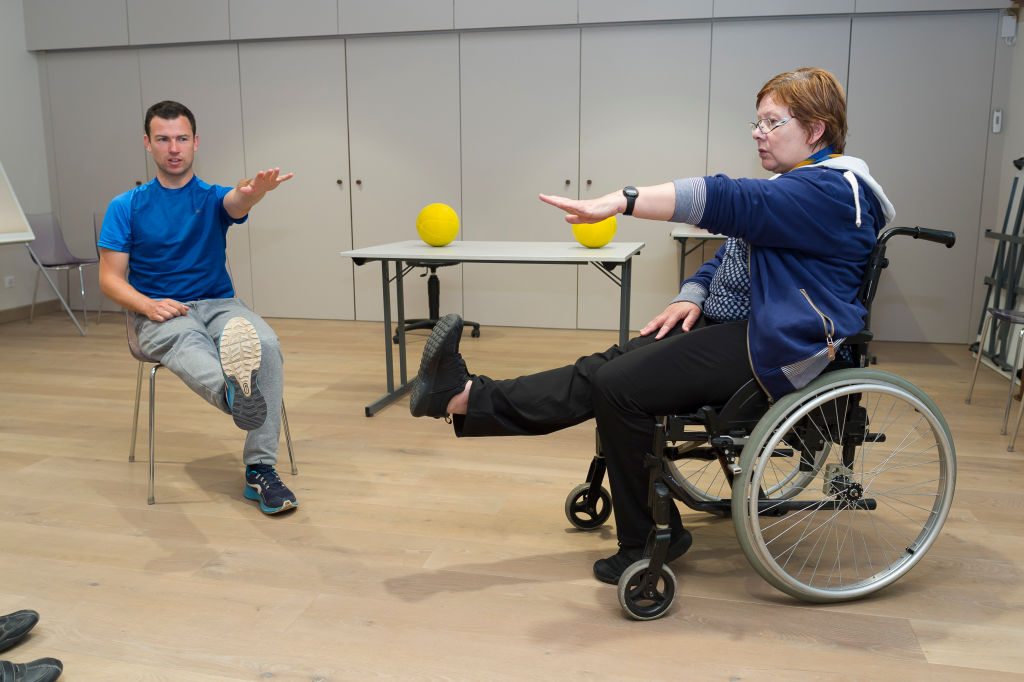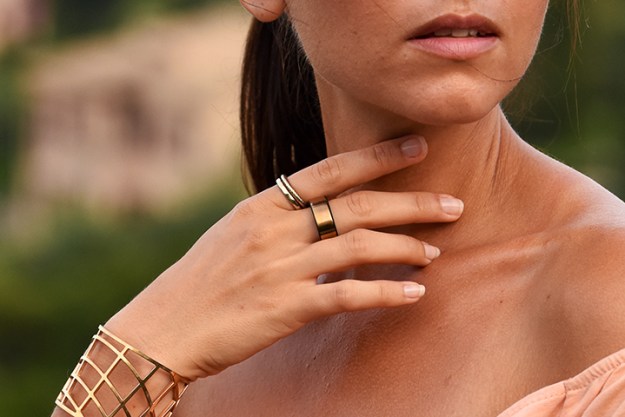Suffering a stroke can change how your body works in odd ways. Maybe you suddenly can’t lift your leg the way you did a few weeks before, or your arm doesn’t seem to extend properly. It’s different for every case.
Recovering from these disabilities can be an arduous process. A patient must not only struggle with his or her impairments, but also the conviction to overcome them. At the hospital, therapists coach rehabbing patients through intense exercise schedules, but after being sent home, patients won’t be monitored as closely and often stop using disabled limbs, favoring healthier body parts instead. This often results in more lost functionality.
Doctors have long been perplexed about how to effectively help patients who aren’t in the exam room or rehab clinic. Researchers and programmers are now developing a new generation of wearables that can monitor, encourage, and even treat people suffering from chronic neurological disorders like stroke, cerebral palsy, and epilepsy, as well as the essential tremors that come with Parkinson’s Disease.
Practice makes perfect
Around 2015, Belén Rubio Ballester, a researcher at Spain’s IBEC Institute for Bioengineering of Catalonia (IBEC), fixated on a specific challenge faced by patients recovering from stroke: Use it or lose it.
“You practice, you learn — if you quit practicing, you lose your skills,” says Ballester. “We see this everywhere, whether you’re playing an instrument or in sports. Stroke patients may similarly lose some motor function.”
It’s common for rehab patients to favor their stronger muscles, usually to the detriment of debilitated fingers, hands, and legs. To remedy this, Ballester launched a pilot experiment to see if a watch-like wearable connected to a smartphone could influence patient behavior. Subjects were fitted with a bracelet-like prototype that buzzed once an hour to remind stroke sufferers to use their arms, and an app installed on a paired phone checked for movement that confirmed the patient actually followed the advice. It was a small study, monitoring just four trainees over five days, but the results were consistent: The techno nudge helped.

In March, the same team launched a follow-up study that promises to be one of the largest experiments of its kind, training and tracking 100 recovering stroke patients with a combination of smartphones and Android Wear watches.
Similar to the original homegrown bracelets, the Android watches will buzz once an hour to remind patients not to forget they need toexercise their impaired limbs. Study participants will also be able to see their usage quantified on paired smartphones. The
Employing Android Wear is more of a practical choice than tech preference.
Ballester projects initial data for the study will be available by December 2020. The IBEC team also plans to track the patients after they’ve stopped wearing the watches to check if the habits developed by the recurring buzzes will stick. The full results should be completed by the middle of 2021.
Wearables to monitor neurological disorders
On the other side of the Atlantic, Rutgers University professor Jean-Francois Daneault is using wearables, phones, and robotics to monitor and treat patients with a range of neurological disorders, including stroke, cerebral palsy and essential tremor. In 2019, he won a $400,000 grant from the National Institutes of Health to develop a platform that will track patients over long periods to help diagnose those impairments.
“A lot of those ailments have overlapping symptoms,” said Daneault. “Doctors who aren’t specialists can have a hard time identifying the differences between the diseases.” A well-attuned wearable, in combination with a smartphone app, can capture those often imperceptible symptoms that give a doctor the necessary stats to make an informed diagnosis.
The platform will also potentially be used to measure how symptoms may change over months and years. “People may only see their neurologists or doctors once or twice a year, for a limited amount of time, so it can be difficult to know how they’re doing,” says Daneault. A well-done app can tell a doctor if a medication is working or if the treatment needs to be adjusted.

“There are very few specialists, and they’re always booked,” he says, underscoring the need for more monitoring of patient ailments.
Though Denault is attempting to build a platform that can work with Android Wear, Apple watches, and Fitbits, the wrist-worn tech can measure more than just arm and hand actions. Gait can also be tracked with a wearable or a smartphone placed in a pocket.
One of the big challenges of making a platform that works with multiple wearables is understanding the slight differences between the gyroscopes and accelerometers embedded into each. Daneault realizes the practical challenges such a platform must overcome: The app will need to pick through a wealth of data and parse out the most relevant information, and also find ways to integrate what is learned into numerous digital health systems.
Researchers are developing parallel tech and functionality at numerous schools, hospitals, and institutions. Doctors at the Cleveland Clinic are using iPads to measure the balance of multiple sclerosis (MS) patients. An A.I. expert at the Massachusetts Institute of Technology developed a smartwatch that can look for the signs of epilepsy seizures and predict their onset before they occur. There’s even a Google X project that uses Fitbits to help track the progression of MS symptoms.
Not all of these projects are ready for prime time, but the U.S. Food and Drug Administration (FDA) has already approved a few wearables that can monitor and treat neurological issues, and they are now commercially available. The Embrace wearable, for example, is a bracelet that monitors wearers for stress and potential seizures. A device called Trio, on the other hand, delivers peripheral nerve stimulation to ameliorate the symptoms of essential tremor. A clinical study of the device showed that using it decreases the amount of hand shaking, often caused by Parkinson’s disease, within three months.
Such products are just the early signs of how the treatment of neurological disorders is about to radically change.
“The future of motor rehab is not at the hospital,” says IBEC researcher Ballester. “You want patients to go home as soon as they feel safe and want to, and things are prepared at home. But you don’t want to lose track of them. You want rehab embedded in life. If it isn’t, it won’t be maintained … That’s why I see rehab in the life of the patient. Not at the hospital.”




